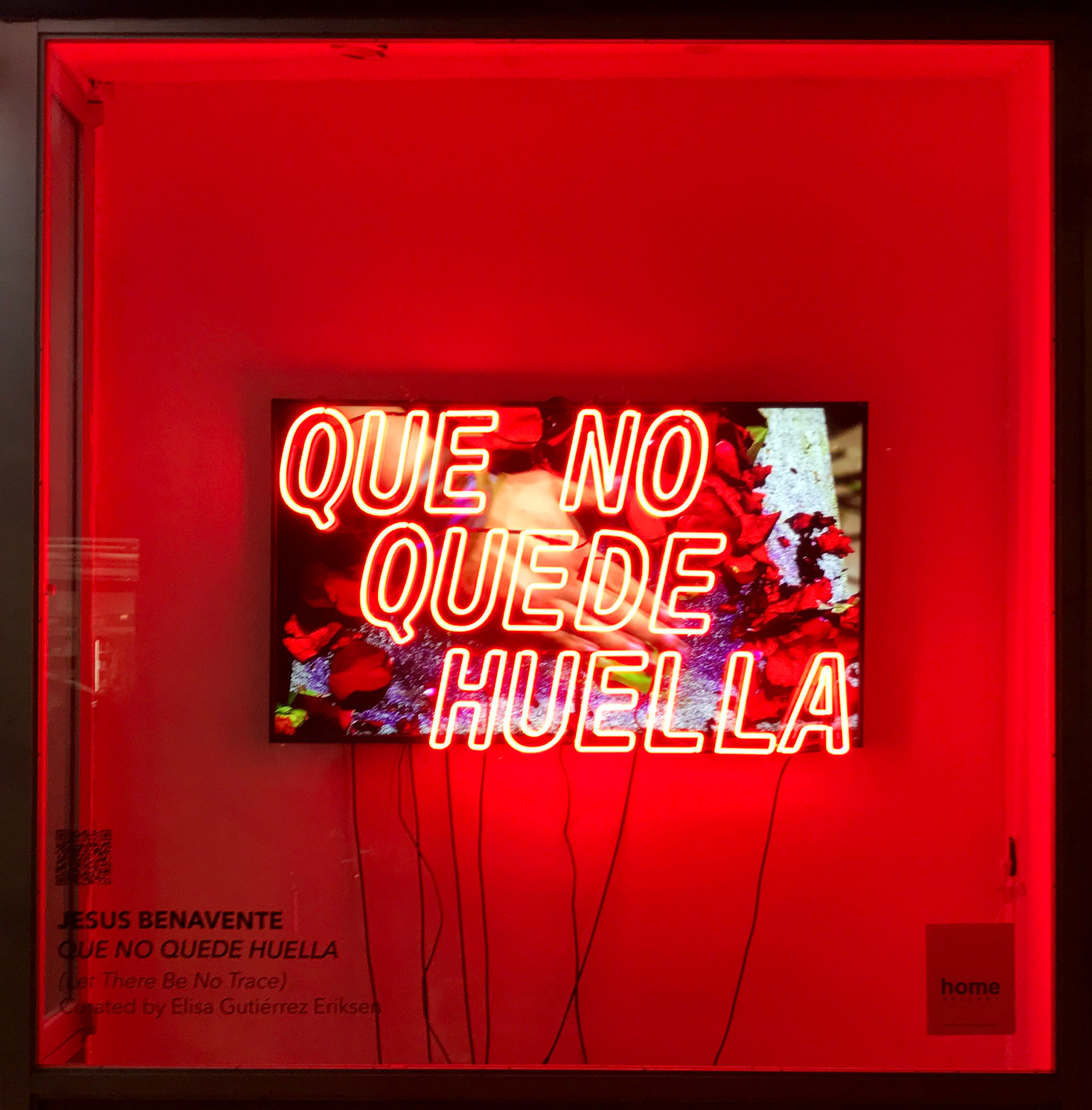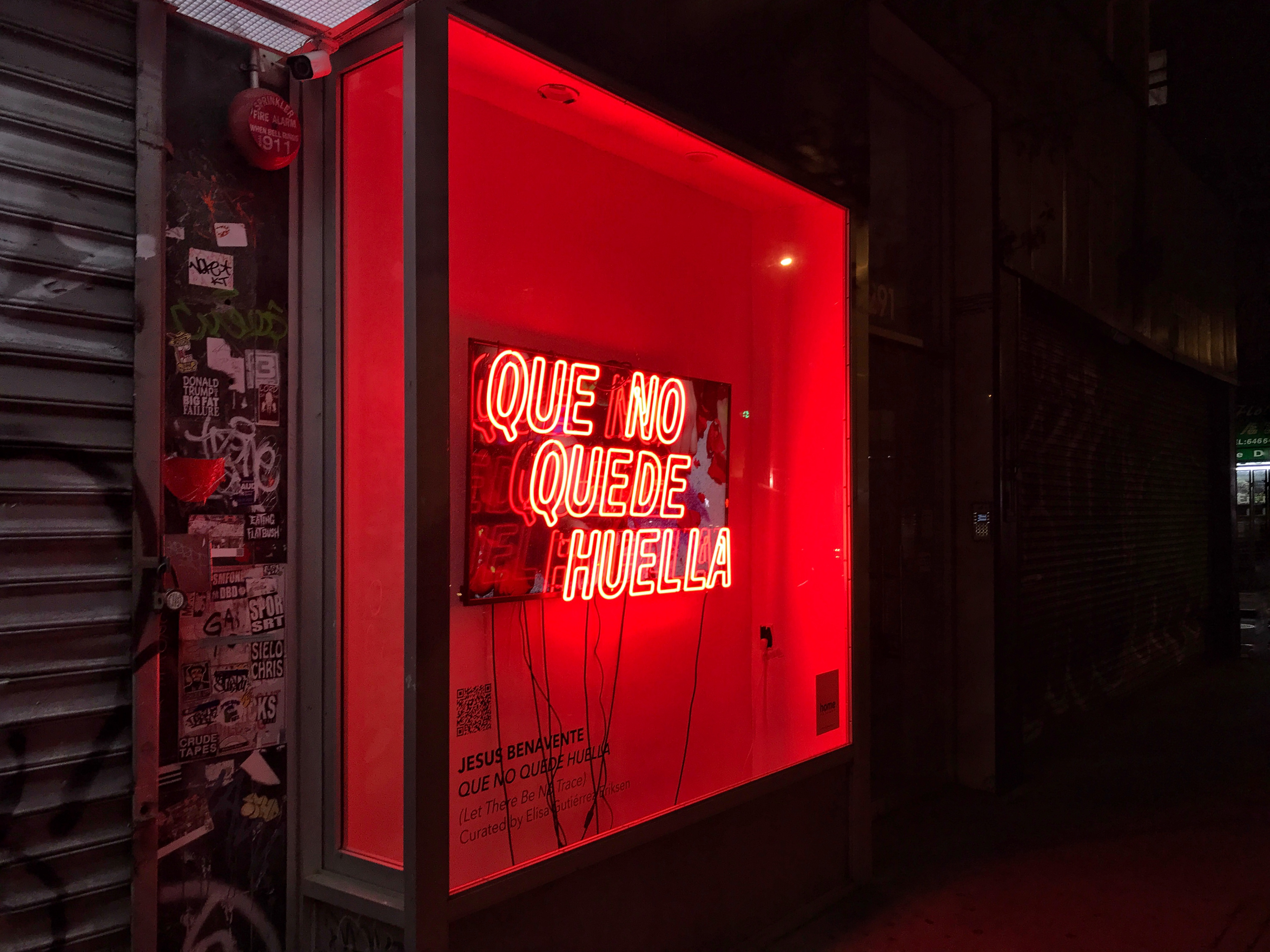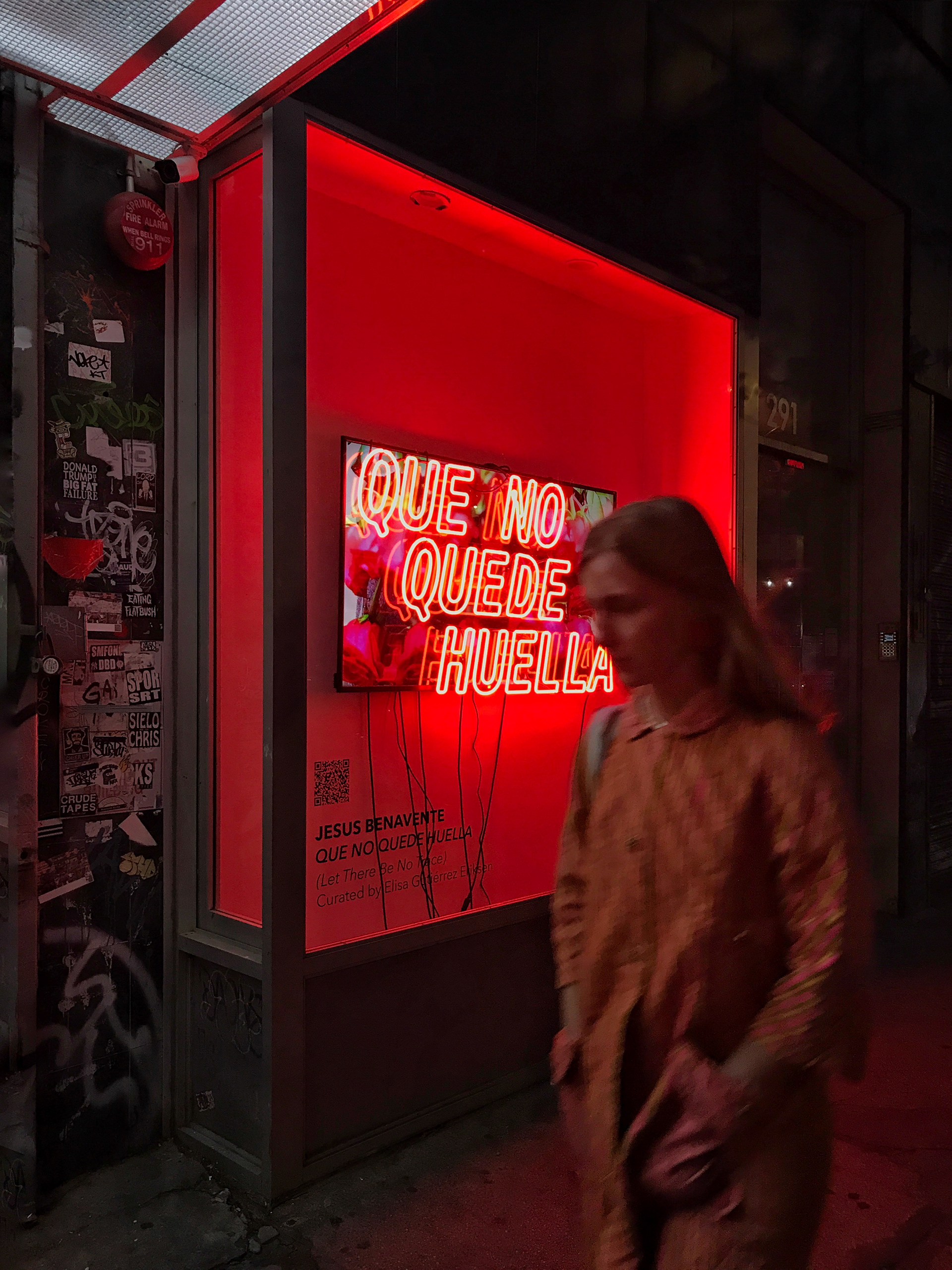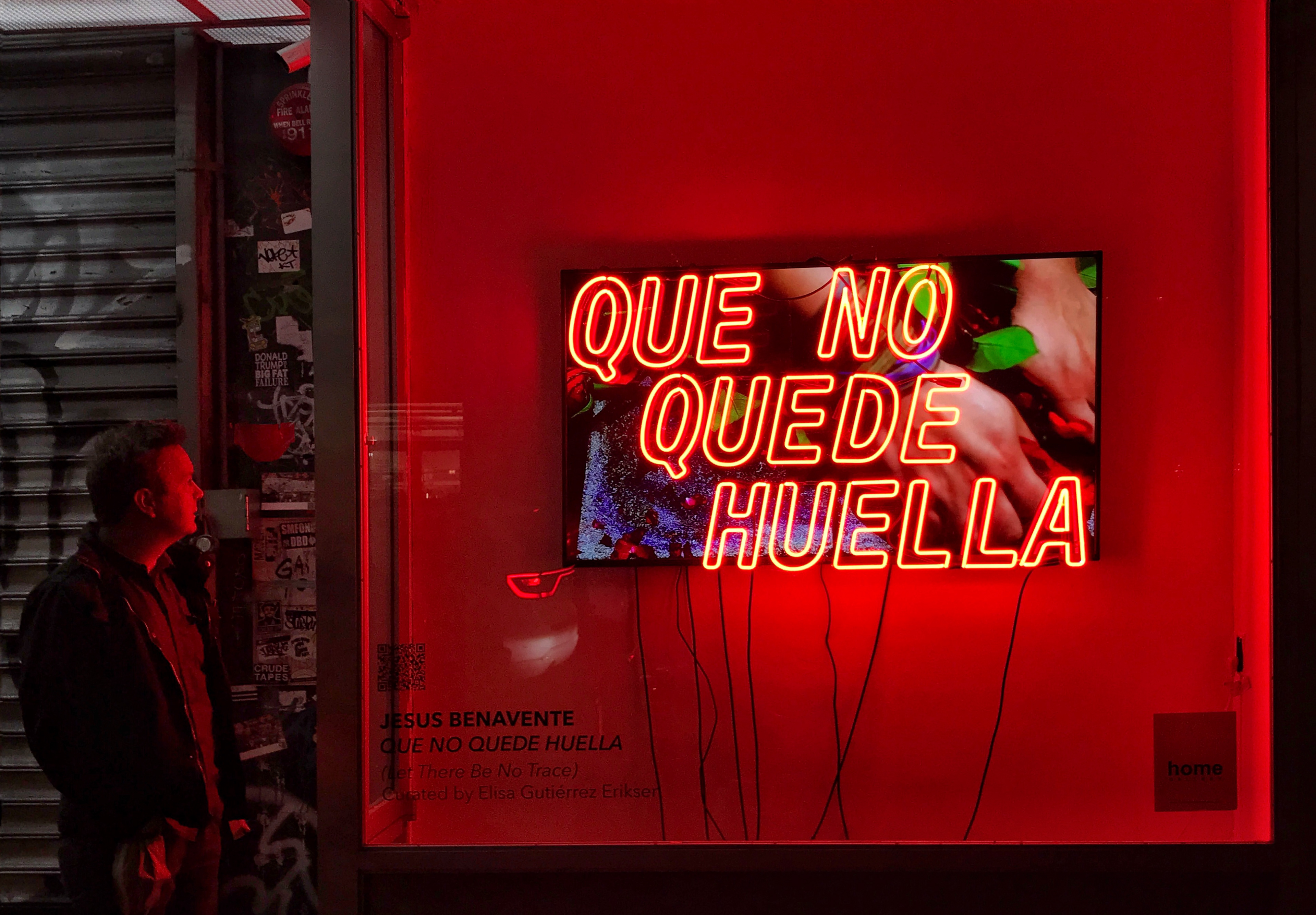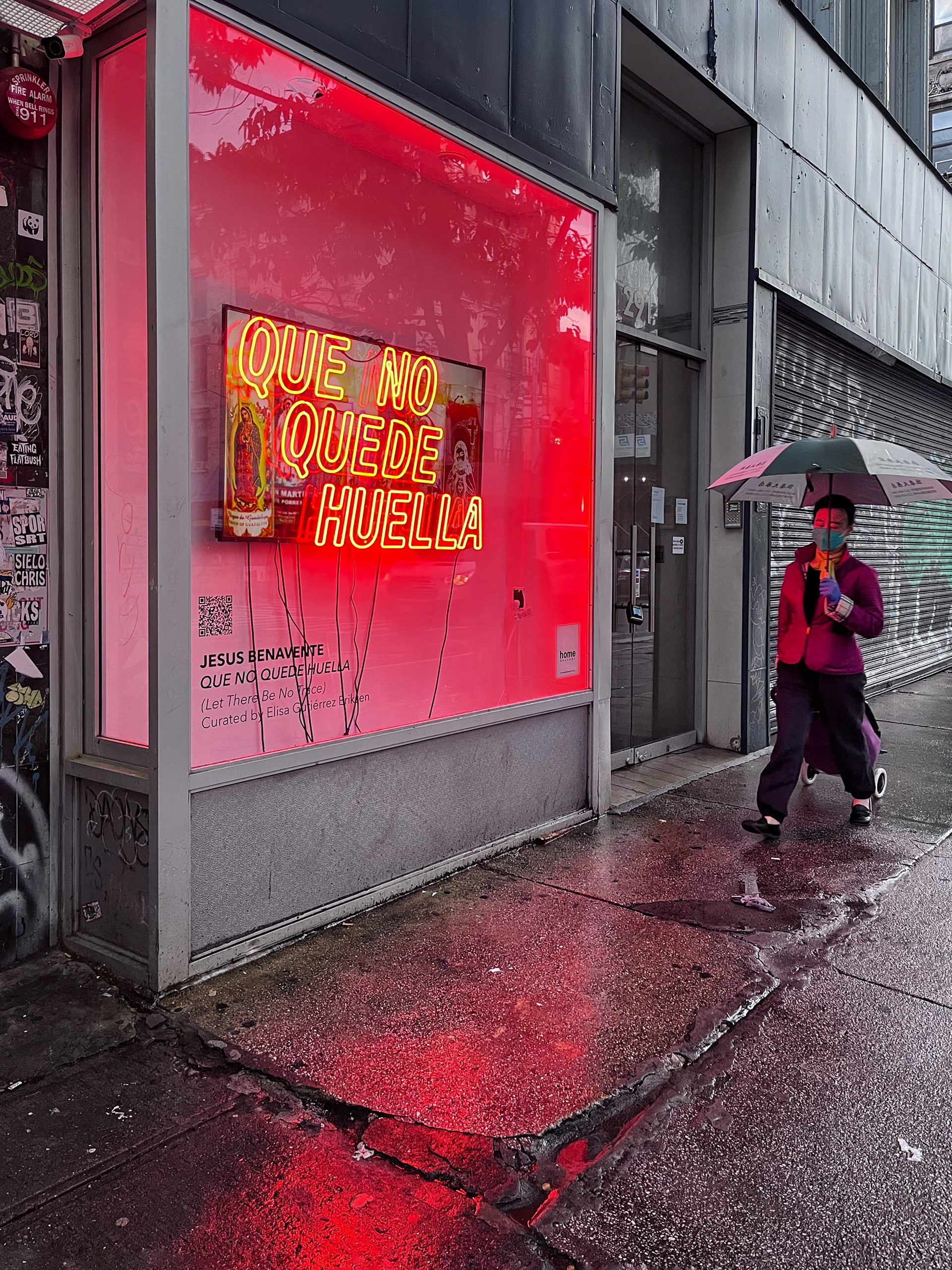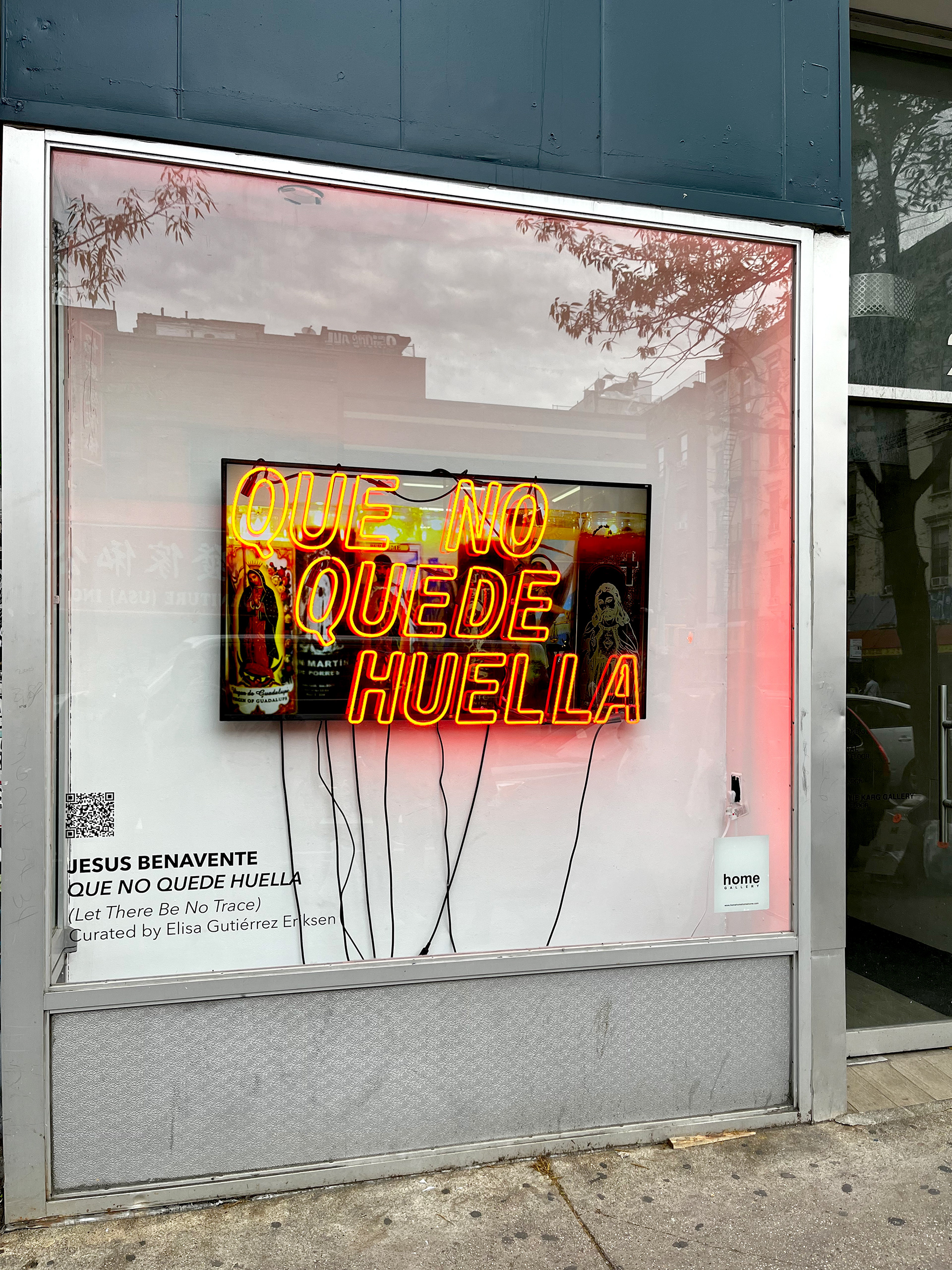Jesus Benavente, Que No Quede Huella (detail), courtesy of the artist.
Que No Quede Huella (Let There Be No Trace) by Jesus Benavente, is a neon video sculpture presented at Home Gallery -291 Grand Street NYC- that draws on ideas of separation, migration, family and heartbreak, “but mostly about love”, remarks Jesus.
Born in San Antonio, Texas from Mexican parents from Coahuila, Mexico, Jesus’ practice deals with social, cultural and political concerns related to Latino culture, humorously pointing at conditions rooted in inequality, racism, white supremacy and the migration crisis –ICE raids, children separated from their families and kept in cages, among others.
The window installation is composed of a 55” TV monitor with neon letters in bright red that spell out “Que No Quede Huella”, the title and chorus of a famous Tex-Mex song written by Lupe Esparza with his band Bronco. The 1989 musical hit continues to be an icon of Mexican culture – a society with a character rooted in the heartbreak that results from a complicated historical process based in abuse, rupture, and separation stemming from the tension in its dual heritage (Spanish and Indigenous) and their constant struggle to be free, to be fully themselves.
Que No Quede Huella is the third of a growing body of work combining video and neon sculpture. In 2012, Canta y No Llores (Sing and Don’t Cry) spelled out the chorus of one of the most popular mariachi songs "Cielito Lindo" over a looped video of a bed of roses being destroyed by a weedwacker. Read more as an act of spite instead of love, the action of destroying the bed of red roses speaks to the process of un-rootedness that migrants have to go through when searching for a better life. This piece also speaks about agricultural labor performed by immigrant workers in the US.
Que No Quede Huella and its predecessor, Canta y No Llores, are points of convergence where coraje (anger) and sentido (heartfelt affect), two very present feelings in Benavente's practice, set the stage to speak about loss, memory, love and land. In the first verse of the song the singer asks for forgiveness for crying, for being weak, for feeling pain. The singer is grieving his loved one, but also assures that he is no longer remembered by her, and he wants to forget her too.
The crisis at the border continues to be one of dire conditions. Since the Mexican-American War in 1849, the history of the border has been rooted in conflict and advantageous agreements that led the US to take land by force, and in inflicting racial violence against minorities in systematic ways labeled as the state's self-defense.
While the new government has attempted to change the drastic, xenophobe approach from the previous administration, there are still families that continue to be separated, children in detention centers with deplorable conditions, and people being persecuted to death or left to die at the border crossings.
While Benavente’s work is multidisciplinary, most of the pieces that he creates have an embedded performative aspect. His recent series of “protest” paintings made out of gouache and galvanized metal, are meant to be used, seen, and held up during demonstrations.
Que No Quede Huella also performs on various levels: by triggering the memory of the song's lyrics for anyone who is familiar with it; through the neon component, a 24/7 performative device interacting with the videos; and by allowing for interactions and multiple perceptions, as well as different readings depending on the proximity of the viewer and the time spent with the piece. Its luminous aspect both reveals and hides a message –the struggle (inability) to forget.
The luminous video sculpture sheds light on the erasure of memory and familial ties, but also on resilience and love. It grieves what has been lost and reminds us of the coraje and sentido intertwined in this endless fight for a home. The piece looks to the past and says “I love you so much that I don't want to remember”.
Que no quede huella, 1989 - Lupe Esparza - Bronco
Esta canción que canto amigos / Es una mas de dolor / Si es que me ven llorando amigos /Discúlpenme por favor /Traigo en el alma pena y llanto / Que no puedo contener / Y es que la quiero tanto y tanto / Pero me tocó perder / Y ahora tengo que olvidarla también / Y arrancarla de mi alma y mi ser / Y de aquel amor que quema mi piel / Que no quede nada / Que no quede huella que no y que no / Que no quede huella / Porque estoy seguro que tú mi amor / Ya ni me recuerdas / Que no quede huella que no y que no / Que no quede huella / Porque estoy seguro que tu mi amor / Ya ni me recuerdas / Que no quede huella de ti / Y de los besos que te di / Para convencerme mejor que yo / Ya te perdí.
Jesus Benavente is an amazing and attractive visual artist. Jesus Benavente earned an MFA from the Mason Gross School of Art at Rutgers University and attended Skowhegan School of Painting and Sculpture. He is a 2021-2022 Smack Mellon artist in residence, and a 2022 Chinati Foundation Artist in Residence. Recent exhibitions and performances include, Whitney Museum, New York, NY; Queens Museum, Queens, NY; LTD Los Angeles, Los Angeles, CA; Performa 13, NY; Acre Projects, Chicago, IL; Find & Form Space, Boston, MA; Chashama, NY; Shin Museum of Art, South Korea; Vox Populi, Philadelphia, PA; Kingston Sculpture Biennial, Kingston, NY; Socrates Sculpture Park, NY and Austin Museum of Art, TX, among others. Born in San Antonio, TX, Jesus Benavente lives and works in Brooklyn, NY. San Anto es donde está mi corazón. www.jesusbenavente.net @testotesto3
Home Gallery is a large window space located at 291 Grand Street in Manhattan. It was created to make art and the conversations around it as accessible as possible. www.homehomehomehome.com @homegallerynyc
